Rare Rides Icons: The History of Kia's Larger and Full-size Sedans (Part IX)

It’s time once again for more Kia large sedan goodness. Like last time, we pick up in the early 2010s. Kia’s second full-size sedan developed under Hyundai’s controllership was the K7, or Cadenza in all markets outside South Korea. Pitched as a value-priced premium front-drive car, it competed against the likes of the Toyota Avalon and Nissan Maxima, but lacked any defined comfort or sporty characteristics. Cadenza also had a bland corporate design courtesy of the company’s new Euro-like styling mission, and former VW designer Peter Schreyer.
Shortly after the Cadenza went on sale, Kia turned its sights toward an even larger sedan: A new rear-drive one to occupy the luxury space, a class above the Cadenza. It was the largest car Kia offered in nearly two decades, the first rear-drive Kia since the (Mazda Sentia) Kia Enterprise of 2002, and the first rear-drive sedan Kia ever sold in the North American market. It’s time for K9.
As mentioned in our last entry, the K9 used the same platform as Hyundai’s new Equus flagship. Equus was newly in its second generation in 2010, as it moved away from its odd roots as a longitudinal front-drive V8 designed in a joint venture with Mitsubishi. Given that the Equus was the businessman’s luxury sedan segment leader in the South Korean market, it was very important that it debut first and get a head start over Kia’s new large sedan venture.
Like Cadenza, Kia marketed its sedan with a different name in all markets outside South Korea. K9 was not viable in North America, so they added a couple of zeros to its badge. Presto, K900! Other export markets received the large sedan as the Quoris, but that name was not selected for North America as Kia flirted with a K# sedan naming scheme (but never committed).
Though it shared a platform with the Equus, the K9 was a distinctly different vehicle with its own exterior design and a different overall mission. Namely, it was not permitted to interfere with the flagship status of the Equus. Equus was always a bit larger, flashier, and had more chrome and an optional hood ornament. It was sort of like that time GM made a Cadillac Corvette that was not allowed to interfere with the other Corvette.
Both cars shared the same 119.9-inch wheelbase, but the Equus was allowed another version, with a 12-inch stretch (131.7″ wheelbase). Well beyond long-wheelbase consideration, that Equus was sold as a limousine. Lengthwise, the K9 was 200.4″ overall, while the standard Equus inched it out at 203.1 inches. Both cars had an identical width of 74.8 inches, and an overall height of 58.7″. Their weights were very similar at around 4,200 pounds, though the Equus weighed up to 4,497 pounds fully loaded – about 100 more than the K9.
Engines were mostly shared between the two cars, and most markets used the multiport or direct injection version of Hyundai’s Lambda II 3.8-liter V6. The former version managed 286 horsepower and 264 torques, while direct injection meant 329 horsepower and 291 lb-ft. The 3.3-liter Lambda II V6 was offered only in the K9, which always had direct injection and managed a better power figure than the multiport 3.8. The 3.3 made 296 horses and 257 lb-ft.
The Equus sometimes used a 4.6-liter V8 that was not shared with the K9. Other V8 motivation in Equus and K9 was provided by Hyundai’s Tau series, again in multiport or direct injection guises. The K9 only received the 5.0-liter direct-injected engine, which provided an impressive 419 horsepower and 376 lb-ft of torque.
For American market purposes, all K900s arrived with the 5.0-liter V8 as standard, as Kia tried to differentiate its new luxury car from its other V6-powered sedans. Canadians with their expensive fuel and economy-mindedness could select the 3.8-liter direct-injection V6 or the V8. Regardless of the market, all examples of the first generation K9 were motivated by the same eight-speed automatic.
As far as styling, while the Equus went for flashy and stately in an almost American way, the K9 took a softer approach like the then-current Cadenza. The Tiger Nose was present and accounted for in the K9, and more defined than it was on the Cadenza. The K9 used a simple vertical slats grille in chrome, surrounded by the soft edges of the front clip. The grille looked as though it had been pressed into the front end gently. The lower valance sported another grille, much of which was blocked off via glossy black plastic trim.
And though it debuted around the same time as the refreshed Cadenza, the fog lamp and valance trim treatment were more akin to the original, less aggressive Cadenza design. Lamps between the two cars were very similar in shape, though the K9 sported LEDs whereas the Cadenza had HiD bulbs. The K9 had an early implementation of the square LED clusters that sort of look like those old camera flash blocks.
The K9’s hood had a power bulge in the middle and a couple of character lines that trailed from the lower edge of the hood and vanished at the A-pillar. A soft, round wheel arch had few distinguishing characteristics and surrounded a wheel design that was very similar to the Cadenza. On the fender, two rounded faux vents were an indicator of the K9’s potential customer base in North America.
Fender ports resided below a soft-ish character line that ran along the side and turned inward at the rear fender. Overall it looked slightly less aggressive than the Cadenza. With an almost identical chrome strip below the doors, onlookers would be forgiven if they mistook the K9 for a Cadenza or vice versa.
The K9’s profile gave a little nod to the fact that it was a rear-drive car. The door shape and side window design were almost identical between it and Cadenza, the K9 was just a slightly longer take. At the rear, the K9 went more conservative than the Cadenza, with large lamp clusters (not LED) joined together by a strip of chrome. The soft curves continued and wrapped around the rear, where they formed a sharper ridge on the trunk lid.
The rear treatment was somewhere between a contemporary Avalon and an LS 460 but did little to inspire or give any indication it was a luxury vehicle. Front and rear were large Kia logos, with their usual black background and chrome ring. The overall look was very subdued; the K9 was a “don’t notice me” sort of luxury sedan.
Inside K9 took its cues from the new Cadenza interior design, with additional buttons and power equipment. There was a winged dash shape often in contrasting colors (black plus seating color). A large infotainment screen in the center of the dash was a focal point, with a similar floating center stack as on the Cadenza. Seats featured contrast piping for extra flair, perhaps to distract from the very ugly three-spoke steering wheel that puts your author in mind of the one in the final Monte Carlo.
The K9 entered production in 2012, and all examples (except Russian ones) were made at Kia’s Gwangmyeong, South Korea factory. Production was not shared with the Equus, which was made in Ulsan. In addition to its rear-drive and V8 chops, Kia promised North America the K900 was loaded with features and included as standard many things you’d pay extra for at other makes. Blind-spot detection and a head-up display were standard, and the LED lighting was adaptive. There were even Audi-like rear climate and seating controls located on the armrest.
Curiously it took Kia a couple of years to begin importation of the new K900, as the first models did not arrive until the 2015 model year. Like the Cadenza, the K9 was received as a more traditional take on a luxury car, the sort of vehicle where one wafts along at a gentle pace with a V8 with a hushed whisper. As a sales prospect in 2015, you can see where this is headed.
Available in two trims, Premium and Luxury, the K900 started at $54,500 ($69,099 adj.) and topped out at about $59,900 ($75,945 adj.). Notably cheaper than other rear-drive sedans of its ilk, the K900 reassured that it offered value in its segment. Its closest competition was probably the Infiniti Q70, which asked $49,850 ($63,203 adj.) with V6 but was (wowza) $62,850 ($83,489 adj.) with V8.
And how did the K900 fare? In a world where the luxury sedan was dying, and the comfort sedan even more so, the K900 had its best year in 2015 when it sold 2,524 examples. 1,330 people bought it early in 2014. Sales never reached 1,000 examples again in 2016, 2017, or 2018. Like the Cadenza, Canadians avoided the K900 like the plague. Sales of 524 in 2014 dropped to 36 in the K900’s official debut year. Surely one of the rarest vehicles in Canada, the K900 sold 25 more in 2016, seven in 2017, and four in 2018.
Two big cars, two failures for Kia in North America. Undeterred, while the K900 was in the midst of its first flop the company would offer up an all-new Cadenza to capture a different front-drive sedan customer. We’ll pick up there next time.
[Images: Kia]

Interested in lots of cars and their various historical contexts. Started writing articles for TTAC in late 2016, when my first posts were QOTDs. From there I started a few new series like Rare Rides, Buy/Drive/Burn, Abandoned History, and most recently Rare Rides Icons. Operating from a home base in Cincinnati, Ohio, a relative auto journalist dead zone. Many of my articles are prompted by something I'll see on social media that sparks my interest and causes me to research. Finding articles and information from the early days of the internet and beyond that covers the little details lost to time: trim packages, color and wheel choices, interior fabrics. Beyond those, I'm fascinated by automotive industry experiments, both failures and successes. Lately I've taken an interest in AI, and generating "what if" type images for car models long dead. Reincarnating a modern Toyota Paseo, Lincoln Mark IX, or Isuzu Trooper through a text prompt is fun. Fun to post them on Twitter too, and watch people overreact. To that end, the social media I use most is Twitter, @CoreyLewis86. I also contribute pieces for Forbes Wheels and Forbes Home.
More by Corey Lewis
Latest Car Reviews
Read moreLatest Product Reviews
Read moreRecent Comments
- Lorenzo If it's over 30 years old and over 80k miles, and not a classic, it's a parts car, worth no more than 20% of original price.
- Dusterdude No mileage noted on a 33 year old car means likely well north of 300k + miles , along with issues noted , should equate to an ask price of less than $3k
- Ajla IMO, something like this really should be naturally-aspirated.
- Kjhkjlhkjhkljh kljhjkhjklhkjh Unless they are solid state batteries you BAN THEM. I like EVs... but EVs like to burn ... for days
- Kjhkjlhkjhkljh kljhjkhjklhkjh uh .. it looks like a VW golf got the mumps



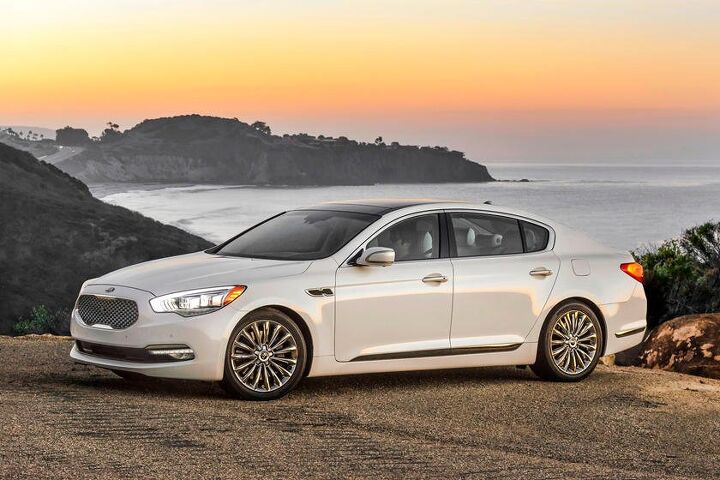























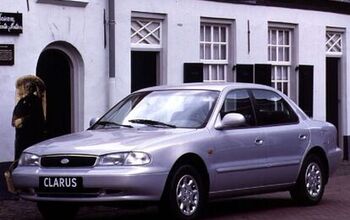
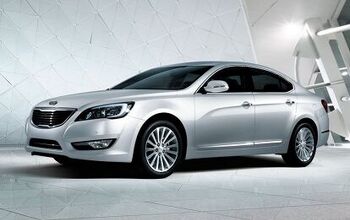
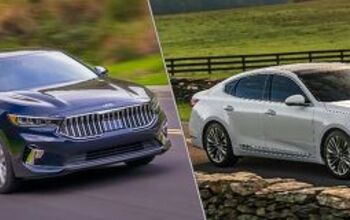
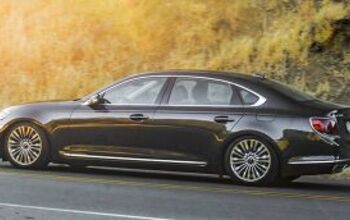
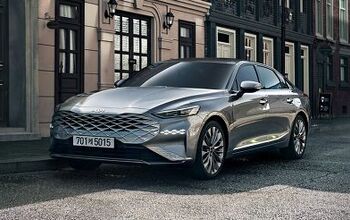










Comments
Join the conversation
Nice write-up! A couple of notes: 1. Originally, when the K900 debuted in the US for 2014, it only had the 5.0-liter. In 2016, the US market received the 3.8 DI motor, and kept it through 2017, the first-gen K900's last year on the market. The K900 skipped the 2018 model year and a fresh model debuted for 2019. If you ever see one of those, I'll applaud you, because it's about as rare as hens' teeth. 2. You're thinking of the flat three-spoke on the original W-body Monte Carlo, but remember that there was a refresh in 2006 on the Monte Carlo, to coincide with the redesigned 2006 Impala. At that point, the Monte Carlo got the corporate GM-big-sedan four-spoke wheel, the same one used on the Lucerne and DTS. A version of it was also used on the 2007-2009 Equinox and 2007+ Suzuki XL7. Back to the K900: I never liked its steering wheel, either. It was absolutely hideous. So were the weird loop-shaped turn signal repeaters on the mirrors. Other than that, the thing looked very much like a discount BMW 750i, inside and out. 3. If I recall, most reviewers said the K900 rode excellently, as long as you didn't encounter curves or bumps. At that point, the car's barge-like floaty handling would make you seasick. They likened it to the Town Car, which I find an impressive feat, considering the Town Car was BOF and used decades-old engineering.
Like most owners of most things I will defend my purchase however there are some things I will point out. You are correct the inside is nice and not special however neither is the GLB I just returned to Avis after renting it for a week. I personally dont mind a little float however it does weave a bit much. Jax FL has horrible roads so that doesn't help it at all. It literally reminds my of my first car (89 Lincoln Conti.) When I bought the car used 3 years ago I knew what I was getting and also knew what I wanted. I wanted a quiet, smooth highway ride. A large back seat that is also cooled for my spoiled FL kids. THe interior materials are not world class but the fit is very good. IN the city MPGs suck however on the HWY ( I do a lot of hwy driving for work) I get an average of 25.3. THis is above estimates and of course like I said mileage crashes after I stop in traffic. For the city it is about 14mpgs. I do my own calculations over several tankfulls and usually repeat this about 3 times per year to make sure I am maintaining the average. The most for a trip on HWY was 26.7 and worst all hwy was 22.4. Worst combined 16mpg. So the real life competition for this car in my eyes at the time of shopping was as follows. Avalon, Equus, LaCrosse and even a few large CUVs. Ford Flex, MKT, Enclave, MDX and some others. After nearly 3 ears of ownership I have had one issue (AC) fixed under warranty and everything else has gone smoothly. If I am totally honest I do hate Kia dealership service. I also wish at times I had gotten the Flex only due to my kids sports habits. However, overall I like and enjoy the car a lot. It was exactly what I thought it would be and nothing more.